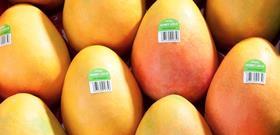
The Australian mango season is about to kick into gear, and if a recent study conducted by the Queensland Agriculture Alliance for Food Innovation (QAAFI) at the University of Queensland is anything to go by, it’ll be a promising season for Honey Gold mangoes.
Researchers Dr Heather Smyth and Jasmine Ngo of the Centre for Nutrition and Food Science at QAAFI, conducted the study on behalf of Honey Gold trademark owners, Piñata Farms, during the 2018-2019 mango season.
138 consumers were given samples of Honey Gold, Kensington and Calypso mangoes and were asked to identify which they preferred based on overall taste, acceptability, flavour and texture.
Participants in the study found Honey Golds to be a good size and as equally appealing visually when compared with Calypso mangoes.
Piñata Farms started growing Honey Gold mangoes in 2009. Managing director, Gavin Scurr, said the business is always looking at ways to improve the consumer experience.
“As growers, it's important to know what consumers want in a premium mango, so we can deliver on those expectations,' he said.
Mr Scurr said the study also asked consumers what factors they considered when choosing a mango and to rate the influence ripeness had on their purchasing decision. According to the results, almost 80 per cent of consumers indicated ripeness was a critical factor when choosing a mango and that consumers preferred mangoes that were 'nearly ripe, and ready to be eaten within two days'
Piñata Farms and some 30 contracted growers produce Honey Gold mangoes in five states between October and March.



